“The first school for your baby is not preschool
but as early as before born and it is called womb school.
This fresh and current concept creates an unprecedented
opportunity for moms to explore the possibility to reform
a baby with different brain functions and updated IQ.
A dream that has been dreamed by human being for millions
of years is coming to us.”
Chapter 13 - EARLY STIMULATION IN BABIES AND TODDLERS

Babies are born with an innate need to learn. In fact, an infant’s brain is only about 25% developed at birth. Over the first year of life, your child’s brain will be more than double in size. By age three, your child’s brain will be about 80% of the size of an adult’s and twice as active. It is important to stimulate your child’s brain in order to create the brain-cell connections, called neural synapses, which establish the pathways for learning.
At birth, your baby's brain contains 100 billion of neurons. Early brain development is the foundation of human adaptability and resilience, but these qualities come at a price. Because experiences have such a great potential to affect brain development, children are especially vulnerable to persistent negative influences during this period. On the other hand, these early years are a window of opportunity for parents, caregivers, and communities: positive early experiences have a huge effect on children’s chances for achievement, success, and happiness.
13.1 Baby stimulation and development
From the moment we meet our little bundle we become responsible for their development, and stimulating your baby from an early age is an integral part of her development. Not only does appropriate stimulation aid in the development of the five senses and brain, but it also plays a vital role in the development of a healthy relationship between caregiver and baby. In fact those early interactions between mom, or dad and baby are the very beginnings of a secure attachment connection between them and, as you will see, a key aspect in the development of healthy selfesteem and confidence. Early stimulation can often be a daunting topic for most parents, especially when your little baby is so tiny he is hardly awake.

Parents fret about buying the right educational toys, the correct books and playing the latest “Mozart for Babies” classics. However, while all these are useful interactional tools, there is nothing quite like face-to-face interaction and play time. It’s a known fact that the new born can see objects best when placed around 20” away from him – No coincidence then that this is the distance from his face to mom’s face when he lays breastfeeding - a time when he can lovingly gaze into mom’s eyes. And that is where most of the learning in these early days takes place. Talking and “coo-ing” to your baby is an essential part in baby stimulation and far surpasses any type of educational toy, or visually stimulating book you could place in front of him. This is where your baby learns the art of communication and socialization, which is imperative in the further development of self-confidence, self-esteem and intelligence.
13.2 Infant Massages
Interestingly, the Native Americans and East Indians have made use of infant massage for many years making use of the benefits on a daily basis. Touch and caress has been used for centuries to communicate care and love, so it is no small wonder that this simple tool is so effective in supporting that special bond between you and your baby, as well as facilitating healthy growth and development. We all enjoy a trip to the spa for a massage – your baby will enjoy a gentle massage too. In fact, research shows that massage promotes growth in young babies where premature babies who were massaged three times a day were able to leave the hospital far sooner than the babies who were not.
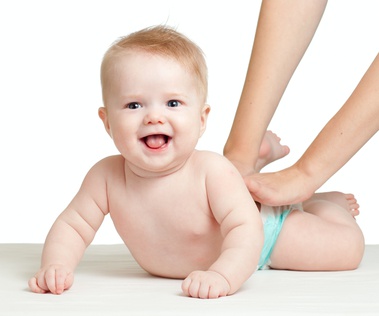
Not only does massage promote healthy growth, but it also stimulates your little one’s tactile senses as well as encouraging bonding, improving sleep and letting your little one relax. Massage also encourages communication and attachment. Babies who are massaged regularly show better immunity and also increased weight gain as opposed to babies who are not massaged. The massage leads to myelination of the nerves, which leads to brain and muscle development so it is not small wonder that massage is so beneficial to growth and development.
Furthermore, if your baby has colic or suffers with stomach problems, an abdominal massage assists in moving the gas out of the digestive system and relieving tummy aches and cramps. Many babies who have trouble feeding also benefit from facial massage as this has been shown to promote the strength of the baby’s ability to suck. In general, infant massage assists healthy growth and development of muscles, brain, communication, immunity, good blood circulation and even stimulating the nervous system.
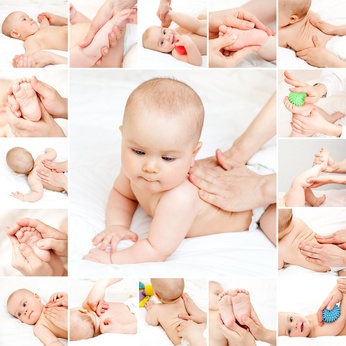
A mix of Swedish strokes, yoga and Indian massage is used in infant massage. It is best to consult a massage therapist who can show you just how to massage your baby in the right way. You can then show your baby’s grandparents how to do it so that they can also be included in bonding with your little one.
13.3 Choose appropriate toys
While face-to-face interaction, being attentive and focused and having meaningful conversations with your baby are imperative in healthy development and growth, the use of appropriate toys also goes a long way in terms of assisting your baby’s physical and mental development. There are a myriad of educational and developmental toys available for your baby so, instead of spending huge sums of money on buying everything you can afford, try to pick appropriate toys that will be beneficial to your little one’s development.
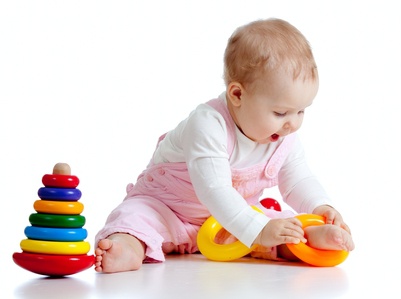
In this sense the use of highly contrasted toys with black and white patterns especially useful for newborns as their sight is just developing at this stage and high contrast patterns are easier to see and more interesting to look at. As your baby gets older you will find that he enjoys brightly colored objects that make a sound when you shake or rattle them. He will love to swat at toys hanging overhead and may eventually try to grasp them. A play gym or mat with toys that hang overhead is relevant and appropriate for this stage. Hang toys that have a bell and can jingle when he swats them as he will love to hear the noise he can make. Once he is able to sit comfortably without assistance you may introduce toys such as shape sorters to help develop his ability to categorize and sort items, or stacking cups where he can learn to fit one size into another. You may find that he really enjoys putting lids onto containers and pots and encouraging this is beneficial for him.
As he learns about cause and effect, a wind up jack-in-the-box toy could be fun teaching him the element of surprise. He will also enjoy toys that make a noise or move when you push a button. As your baby learns to crawl and then walk you will find that toys that move, or roll away from him could be an enticing toy to follow and facilitate the development of mobility. Later on you may consider toys that he can push or pull to assist the development of gross motor control.
It is really important to ensure that you use developmentally appropriate toys with your child. When your child is able to master a task and succeed he will develop self confidence in his abilities whereas he may get frustrated and distressed if he is unable to master a task that is beyond him. As a result, presenting your child with opportunities to succeed is imperative or healthy emotional development.
Toys are known throughout the world as birthday gifts for babies, but has the real benefit of these gadgets been explored? Whether it’s a mechanical robot, stuffed animal or any other toy category, toys have also been linked stimulating baby’s mind. When a child picks up the stuffed toy and subsequently starts tearing it apart, his or her little mind is working in steps to understand the role played by the animal, why it tears apart and so on. Indeed, babies learn a lot in such times from toys.
Toys that make sounds when pressed, such that piano keyboard designed toys also have a substantial impact on a baby’s mind. A baby can follow along with time start making music of his own.
13.4 Games

Games have been designated as some of the ways a baby’s brain can be stimulated. According to a recent study on the effectiveness of games during brain training, it was found that babies can start training their minds through concentration. Simple computer games have highly been linked to this outcome although there are other infant brain stimulation games that can also be used to achieve the same results.
An experiment was conducted by University of London, Birbeck, which focused on 42 babies. During the research project, the babies were divided into two groups. Further into the study, the babies were introduced to computer games and cartoons on televisions. The objective of the experiment was to identify how these babies focus on moving targets and the impact it had on their brains. According to the researchers in the project, an improved focus presents children with an opportunity to identify themselves with new skills.
The results from the study showed that those children who were exposed to computer games had higher brain stimulation than those watching cartoons on the television. This was ascertained by giving all children included in the study to perform various tasks such as playing with their toys, and those who had undergone comprehensive brain training were able to focus on their toys more even with environmental distractions.
Since the front parts of the brain are normally associated with concentration, it is evident that infants can get easily distracted due to their poorly developed brain. But if early stimulation is initiated, growth can be enhanced with time. Researchers in this study were also able to confirm that games could be used to enhance brain capacity of premature births or those with learning and attention difficulties. Apart from computer games, there are other activities suited for toddlers and babies for early stimulation. Some of these games include rocking and bouncing with the baby, dancing with the baby, making sounds for the baby, showing facial expressions, especially to infants.
As the baby grows, games become even more applicable. Curricular activities are recommended in schools because they not only help to identify and build talent, but also stimulate the brain through physical exercise. For babies aged between 4 and 6 years, more advanced games can be introduced to them.
13.5 Have meaningful conversations.
As emphasized throughout the last chapter, face to face interaction with your baby is of utmost importance to his healthy physical, emotional and mental development. Making sure that you have quality time where you are just ‘chatting; with your baby not only builds a strong emotional connection between you, but helps your little one make sense of language patterns and speech so that he can communicate clearly later on. The areas of the brain that are responsible for understanding and producing language are dependent on your input for healthy development. As such, early communication where parents tend to talk in a high pitch and exaggerate each syllable are an important part of communicating with your baby. This talk is referred to as “parentese” and is a natural and common way of talking to young children.
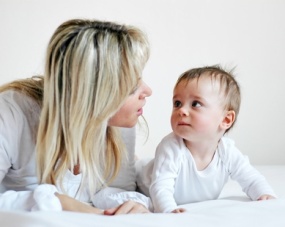
Your little one will acquire rich language skills, as well as planning and reasoning skills when you communicate meaningfully with him. This communication gives his brain the opportunity to wire together important neural connections and pathways essential in understanding and producing language and verbal reasoning. Parents often find it difficult to talk to their baby, especially in the early days, but it is as simple as chatting about the weather. When you are with your baby you could tell him all about what you are doing at the moment and where you are walking and what you can see. Tell him about your day and what you have planned for his day. Communicating with him frequently also makes him feel loved and cared for, which is essential in promoting healthy self-esteem.
13.6 Reading
Study shows that early child stimulation, which enhances brain development has a significant impact towards intelligence building. The experiment was made up of children who were tracked from the time they turned four years. The reason behind this study was to find out how cortex development impacted a child’s future and methods that could be used to enhance this procedure. Reading stands out as one of the most celebrated ways towards brain development. During infancy, there are several ways besides reading for the baby that mothers can enhance the health of their babies’ brains. For instance, talking to the baby is a procedure listed among brain boosting options as well as playing games and keeping a close proximity with the baby at all times.
But when stories are read to the baby with the pictures right in front of the baby, the baby strives to connect the voice from the mother to the pictures on the book. And as it grows, sooner or later the baby will follow every sentence and subsequently connect with the images as the parent reads on. Although the observational factor here is based on children between 0 and 5 years, it is also believed that reading during pregnancy enhances the baby’s intelligence. In the 26th week of pregnancy, the baby’s neural system is already developed. It is able to respond to the sound and voice, which is the reason that music has to some point been attributed to intelligent babies as well especially before birth.

The science behind brain development advocates that the first three years of human life are very crucial towards brain development. In fact, by the time a child turns three years, his or her brain is almost as functioning as that of an adult. Reading to children before they go to bed is a practice, which has continued to work for years. But its traditional objective was to soothe babies and children to fall asleep. According to new scientific evidence, reading has its own hidden benefits towards child stimulation and growth. The brain is designed to respond to any form of stimuli and the process is referred to as neuroplasticity.
Activity levels have a tendency of dropping during adolescence, but the first five years can have substantial results on intelligence as the baby grows to an adult. Although the brain is already developed before birth, there is a lot of work supposed to be done after birth. Early stages of the baby’s life are good timing for enhancement, because it is quite unfinished, and thus reading for the baby is one way to ensure this. Notably, as the baby grows, the caregiver is encouraged to teach the baby how to read before it goes to kindergarten.
13.7 Arrange supervised play with messy materials.
Texture, texture, texture – it is so important in your little one’s development. Imagine what it must be like to handle cooked spaghetti in tomato sauce for the first time. Imagine running rice grains through your fingers for the first time, or squishing corn flour, mud and jelly in your hands. Messy play is a sensory adventure for babies and it will teach your toddler all about the properties of liquids, solids and different mixtures. These sensory experiences are the grist for the developing brain so ensure that you make time to play with as many messy and textured ingredients as you can.
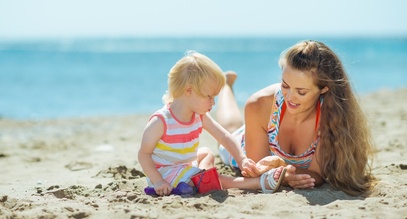
A sand pit is a great investment for a little child where he can mix water with sand and see it turn from ordinary sand to wet sand. Where he can cook up mud pies and serve up sand cakes. A water tray to pour and catch up water is a learning experience that offers great sensory experience. Allowing your little one to mush food on his high chair tray and create wonderful patterns with the textures will allow him a valuable sensory experience. Mix up some corn flour and show him how the consistency changes as he plays with it and leaves it to rest and ensure that you do all this just before bath time. Then you can continue your texture adventure by using bath time as a time to experience water, slippery soap, soft towels and terry washcloths. A sensory adventure that gives your baby’s brain a superb learning opportunity.
13.8 Music
There is nothing more that titillates the ear and improves one’s brain thinking capacity than music. In most design and animation firms or other industries where creativity is a necessity, it doesn’t come as a surprise that special music plays in the background as professional work. The same concept is applicable in babies’ early stimulation.
In the past, parents sang to their babies to soothe them to sleep. This technique was also applicable if the baby was crying and needed to be stopped. By combining other strategies such as bouncing and rocking the baby, parents achieved this goal with ease.
Today, the role of music is more than just a tool to soothe the baby. Researchers have come to believe that music as a stimulating effect to the brain can create new pathways. The brain develops depending on various approaches. While there are contradicting accounts on the role of music, whether it does make people smarter or not, when it comes to adults, it has become evident that music doesn’t boost their smartness. But if the idea is introduced from infancy, especially during the first few years of childhood, there can be lucrative benefits.

Classical music has been reviewed as the best category of music with these special effects. Researchers have affirmed that complex music is able to trigger those paths in the brain that grow to increase the baby’s overall intelligence. Although classical music is believed to provide most support on this process, when it comes to babies, there are those special babies’ songs that should be used as well.
The role of the parent or caregiver when using music for stimulation purposes depends on the level of understanding they have on that particular music. The step by step process includes playing music for the baby, singing to the baby, singing with the baby even if it cannot mouth the words, and enrolling the baby to music lessons, especially those between the ages of 4 and 5.
Overall, when music is exposed to infants as they grow, it boosts their listening and language skills. More scientific evidence has also shown that literacy, coordination and creativity are also improved. All those factors are helpful as the baby develops with more evidence showing that such children are also likely to perform exemplary in math. Since listening to music doesn’t cost anything, not even the caregiver’s time, as one can work as it plays, it has been shortlisted as the most favorable and cost effective method to promote intelligence in babies.
13.9 Foster an Early Passion for Books
Reading is the foundation to language and a good vocabulary so it follows that encouraging a love of reading early on is enormously beneficial to your child. Fostering a passion for books is an easy thing to do with little children, especially if you make the activity fun and special. Choosing books with large and colorful pictures to read together in the beginning will give you a special bonding time where you can share in your baby’s delight in pointing and making sounds. You can show him the sounds that different animals make and teach him the names of colors and shapes.
Later, reading simple stories together is a lovely way to bond just before bed time where you can enjoy the story together. This is especially true once your little one becomes mobile and is out exploring most of the day then reading time becomes a special time to bond together. Many parents also make use of simple stories to help children adjust to specific routines such as bath time, bed time, going to school and going on holiday. These books help your baby to understand the sequence of events so they can make sense of what is happening.
When you read fairy tales together, you can modulate the tone of your voice and elaborate on the story line encouraging your toddler to talk about what is happening and encouraging language development. When parents show an interest in an activity, children often follow suit so ensuring that you are enthusiastic about reading and communicating that this is a special activity together will help your baby feel positively about reading.
Allow him to come to the book store with you and choose books that interest him and remember that building your baby's ability to understand language is more important than developing his ability to speak during infancy. In this sense do not be too concerned about getting him to talk about the pictures when he is still very young, but rather use the opportunity for you to talk about the pictures and develop his receptive language. Later, when he has reached toddler stage you can encourage him to talk about what he sees.
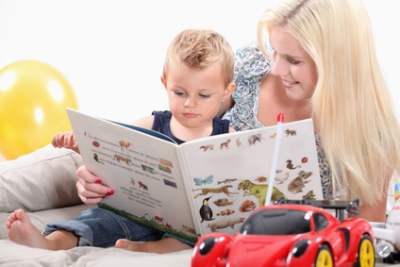
Not only does reading provide some valuable bonding time, but it also increases your child’s ability to grasp abstract concepts, apply logic in a variety of different scenarios, understand cause and effect, and develop sound judgment. Furthermore, learning to sit still during story time is a valuable skill that forms the foundation for later ability to concentrate and sustain attention.
13.10 Play games that involve the hands and sequences
Another fun and stimulating game to play with your older baby or toddler is pattycake clapping game. Young children love to clap and toddlers respond well to repetitive, sequential games such as patty-cake, peek-a-boo and this little piggy. Not only does it give you valuable face-to-face time, but it also teaches your little one hand-eye coordination, fine and gross motor skills, as well as cause and effect and anticipation. Peek-a-boo is an important game to establish object permanence. You will notice at around 8 – 10 months of age that your baby becomes quite distressed when you leave him.
It is around this age that he begins to realize that he is separate from his mother and that she can leave him. Separation anxiety normally sets in around this time and it is an important developmental milestone. You can help your baby overcome this anxiety by teaching him that objects that disappear don’t cease to exist and the same goes for mom – when she leaves the room she will still come back. Playing peek-a-boo with toys and with yourselves (by hiding behind a blanket and then reappearing) helps your baby understand that objects still exist even if he can’t see them. It

It is a really good idea to have at least one or two periods of learning play with your little one per day. These sessions don’t have to be particularly lengthy – just around ten to fifteen minutes would be perfect. Remember that you don’t want to overstimulate your baby, so keep an eye on him and make sure you stop when he shows signs of getting tired or fussy. These play sessions are best when they include a mix of stories, songs, dancing and some visual stimulation. Later on, when your little one is alert for longer periods and can handle a bit more play you could try add games that stimulate the other senses such as tactile and olfactory stimulation games. In this sense, playing a little game of “round and round the garden” while you run your finger around his palm and then slowly up his arm until you tickle him “under there” will stimulate his tactile senses. Olfactory stimulation could include a walk around the garden and smelling the different flowers, or you could let him smell the spices as you cook dinner
13.11 Sports
Sporting activities in toddlers and babies have been linked with a head-start in career opportunities. This is not the only reason that sporting activities are encouraged to babies. Toddlers can be introduced to sport events as early as 3 years old. The main idea behind this objective is that sports help to nurture the baby physically as he or she grows. The most interesting thing about sports is that the results are triggered by passion.
The child, though with a coach behind, will adapt to unique ways in which he will attempt to breakthrough and gain recognition. Even those parents and caregivers who think they can control talent and introduce their children in various sporting activities, if the child has no passion in the sport, he or she will fail.
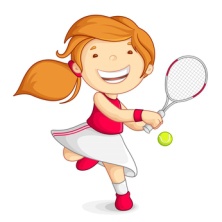
Generally, play is important for kids because it helps them discover their hidden talents, but for those who have done their homework very well, play in kids’ brain development also plays a huge role. Scientific research has confirmed that sporting activities promote healthy development to kids.
When a child is bored, he is incapable of thinking creatively; sports stimulate creativity and subsequently enhance a child’s advocacy skills. More evidence just like the old saying, work without play makes Tom a dull boy, has shown that children are able to learn the benefits of team work, the impact of sharing, and most importantly, how to negotiate.
Children are able to understand the concept of rules, why they are followed among other things, which would all culminate to good virtues. A sporting program should encompass several outtakes, but the most important of all is fun. Sporting activities for kids are always filled with fun.
13.12 Select Old Classic Movies for Children (as Dumbo, Pinocchio, Lion King, etc)
We all remember the classics – Dumbo, Pinocchio, and Lion King (to name a few). These are movies that tugged at the heart strings and always had some deeper moral or value to impart. Let’s take Dumbo as an example. Here is a little elephant with ears so big that he gets mocked and teased about them. At the end of the movie, those ears help him fly above all those who would have bullied him before. This story teaches us that sometimes our flaws can be our biggest assets and that true friends accept us just the way we are. It also shows us that, while magic helps us along, we should believe in ourselves at the end of the day.
Pinocchio, another firm favorite, teaches children that we should trust our elders, stay away from bad company and always be kind and caring to others. Of course, its biggest lesson is not to lie, as one small white lie can turn into a huge problem. Classic movies such as Dumbo, Pinocchio and Lion King all promote self-esteem and confidence. Watching movies where the hero struggles with a particular moral dilemma only to come out on top with increased self-worth and confidence is another form of modeling for our children. Again, spending time with you while you watch the movie together, or read the book, is another benefit to your child. Bear in mind, however, that television is not beneficial to children under the age of two.
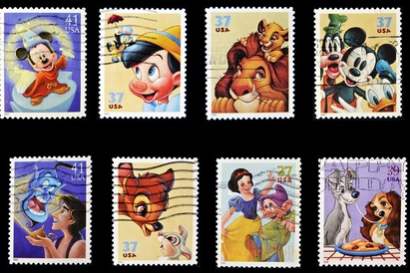
Source: Stock photo from http://depositphotos.com
13.13 Stimulation programs for children
Scientists have continuously endeavored to find answers about child development and disabilities. Although disabilities are usually associated with both mental and physical impairment, and programs for children with such special cases are designed, stimulation programs for children these days exceed developmental disabilities.
State governments plan and empower people to enroll their young children in any of the sets of private and public infant stimulation programs. But unlike in the past where intelligence from babies and toddlers with special needs were most likely to be enrolled and improved, a new study shows that even intelligence from children aged between 0 to 5 years old with no similar conditions can also be improved. Stimulation programs are meant to boost intelligence in so many ways. Brain neurons can trigger connections between children and the environments they are exposed.

Generally, the more environments the children are exposed to, the higher chances that they will be able to interact with those in the vicinity while at the same time understand what goes on around them. Parents who adapt early intervention for their children are likely to impact knowledge and enhance brain functioning, which is a remarkable capacity for these children. Incidentally, improved brain performance also promotes admirable development of the entire body while at the same time acts as a prevention strategy against handicapped children. Stimulation programs for children can also be targeted to the parent instead of the child.
When parents and children are subjected into these programs, especially those that combine them within the same facility, they are able to interact and understand each other accordingly. When a child’s cognitive development is evaluated at length, it would be evident that the role played by these are beyond any medication or brain training method for kids. The digital world is exposing children to advanced programs where gadgets are availed to them. These gadgets are fitted with simple games, animations and other visuals that would maximize the brain and subsequently hard wire it.
13.14 Others Methods to Stimulate
There are so many things that caregivers, parents and other child specialists adapt in order to promote early stimulation. A window of opportunity for a child is always open from the time of conception to birth all the way as it grows to an adult.
It is the role of the mother, or the caregiver to explore all those opportunities and later extend them to the child. But what should be done? We have explored music, games, special programs and sports.
One thing we failed to recognize is sensory motor experiences, which terms are those predefined elements all together. The abilities to touch, strike, kick and catch are all stimulated to the child.
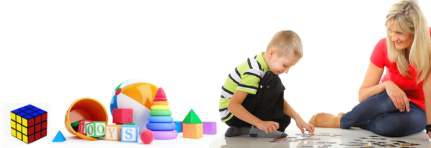
A comprehensive program that will identify a baby or a toddler as well nurtured being should encompass all locomotive principles that will play a key role towards stimulating and hard wiring those fundamental patterns that will lead to an improved skills set. Combining music and other motion based activities is revered as a good way to help babies achieve good results. When infants interact with their caregivers on daily basis through predefined physical activities, they are able to explore the environment in depth.
Infants are playful in nature, which means that they should not be placed in areas or facilities that restrict their movements for a prolonged period of time. Researchers have come to realize that those infants with no access to features that facilitate development take longer to achieve complete mobility. Knowledge is a necessity to any caregiver or parent as they are supposed to have some basic ideas on the benefits of early stimulation.
Baby's language is a special language that babies use to communicate to each other. Bringing together several babies in one sitting allows them to exchange views and subsequently connect. Talking to the baby can be used to help stimulate baby’s minds to start adapting to the current environment. Parents are encouraged to start communicating to their babies even before birth and continue with the trend as early as 0 to 5 years.
Children have a tendency of adapting the mode of communication around them. For this reason, what the caregiver says, the child’s mind records. Research has also confirmed that children are able to respond to their names from infancy, and thus the same norm is also encouraged.
13.15 Kids Who Get Spanked May Have Lower IQs
There is an ongoing debate about whether spanking really does work. The answer is not as simple as it seems. While spanking is certainly effective in the short term; enabling you to modify an unwanted behavior with a small smack on the hand or bum, one has to wonder about the long term effects. So really the question is not whether spanking is effective, but rather whether spanking can lead to permanent damage in children years later.
Corporal punishment has been studied since the late sixties and it was found by Murray Straus in particular that children who have been physically punished scored significantly lower on IQ tests than children who had not. In fact, the research showed that IQ was linked to the amount of punishment received such that children who had been spanked more had even lower IQ’s. This study was conducted internationally across 32 countries illustrating that this was a phenomenon common to many nations – that average IQs in nations where spanking was common was significantly lower than in nations where spanking was uncommon. As such, Murray concluded that corporal punishment and spanking does leave a lasting mark on children years later.
More specifically, a study conducted by Straus looking at a total of 1510 children also concluded that children who had been spanked scored lower in IQ tests than children who had not. Children who had been spanked during the initial survey had scored significantly lower in IQ tests in a follow up survey conducted 4 years later than the children who had not been spanked during the initial survey. The study also suggested that the younger the children were the more significant the difference in IQ was later on.
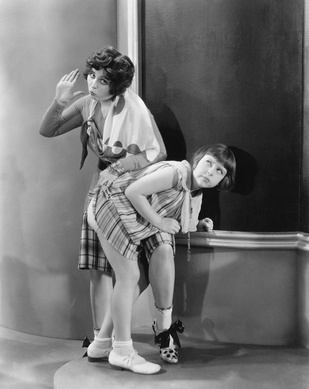
But how does spanking really affect IQ? The studies conducted by Straus suggested that children who were spanked experienced stress and fear and, consequently, found it more difficult to relax and learn. In fact, Straus went as far as to suggest that children who experienced physical punishment were also far less likely to graduate from college, even after you took parental education and occupation into account.
One might ask whether physical punishment really leads to lower IQ, or whether it is lower IQ that leads to more spanking. This is an interesting question, indeed. After all it is possible that misbehavior is more common in children with poor problem solving, impulse control and reasoning skills and misbehavior leads to a need for discipline. Straus, however, suggested that the link between IQ and punishment was actually bi-directional. By this he meant that while there was certainly cause for the physical punishment to take place, the physical punishment itself contributed negatively towards the child’s development in the long term.
The consideration of all this evidence should lead us to move away from corporal punishment as a whole. However, data suggests that this is not the case where the majority of parents in the US are still using physical punishment. In a study looking at around 17000 students internationally, Straus found that there was less use of corporal punishment in countries having a higher GPD. He also found that the tendency towards physical punishment was related to income and culture, as well as parents who had been spanked themselves as children. While the research suggests that the majority of parents are still spanking their children, studies also show that the overall percentage of parents who use physical punishment has been declining. Despite the decline, there are still many who defend the practice of spanking and will say that it is a necessary practice and possibly the only way to modify the behavior of a difficult toddler. This may very well be the case, but it is important to consider the long term damage that is possibly caused by this short term fix.
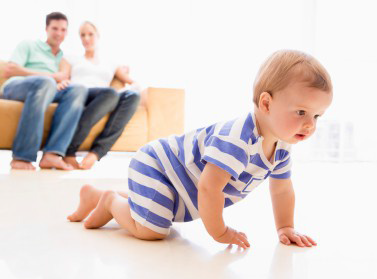
Summary ● It is important to stimulate your child’s brain in order to create the brain-cell connections, called neural synapses, which establish the pathways for learning. ● Early brain development is the foundation of human adaptability and resilience, but these qualities come at a price. Because experiences have such a great potential to affect brain development, children are especially vulnerable to persistent negative influences during this period. ● The role of music is more than just a tool to soothe the baby. Researchers have come to believe that music as a stimulating effect to the brain can create new pathways. ● Sporting activities in toddlers and babies have been linked with a head-start in career opportunities. This is not the only reason that sporting activities are encouraged to babies. ● There are so many things that caregivers, parents and other child specialists adapt in order to promote early stimulation. A window of opportunity for a child is always open from the time of conception to birth all the way as it grows to an adult. ● Baby's language is a special language that babies use to communicate to each other. Bringing together several babies in one sitting allows them to exchange views and subsequently connect. |